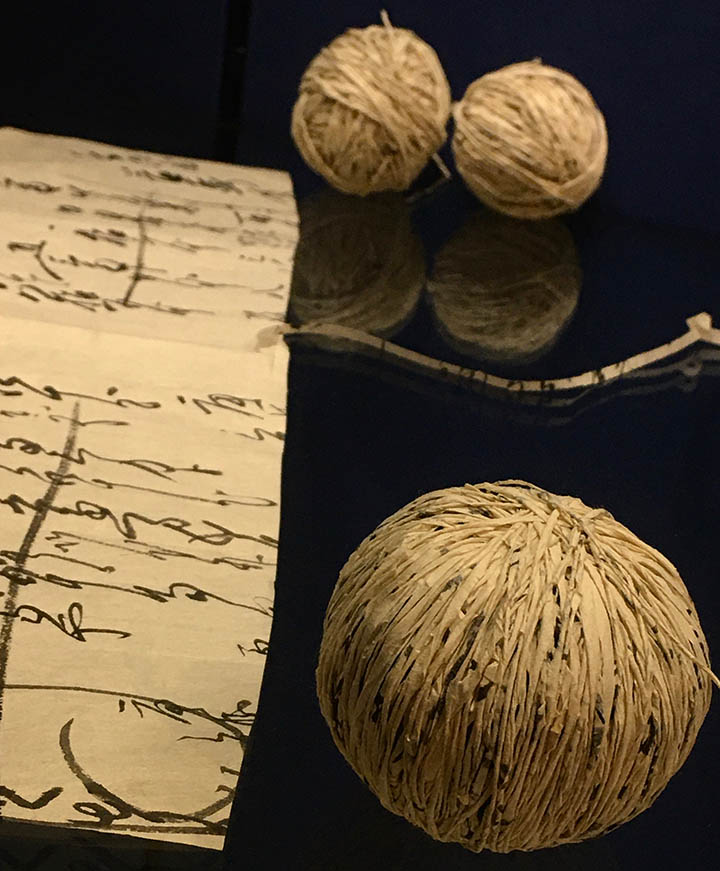The original paper used in the making of ashehajiki was taken from used account books. These would have been painstakingly cut and the ink columns dispersed during the process of making the garment’s paper cordage. In the detail of Siân Bowen’s
recreation of a Japanese ashehajiki garment, banana leaves are used to make abaca paper instead. Photo courtesy Marie O’Mahony
IFJ_012024_cellulose_ashehajiki 2


